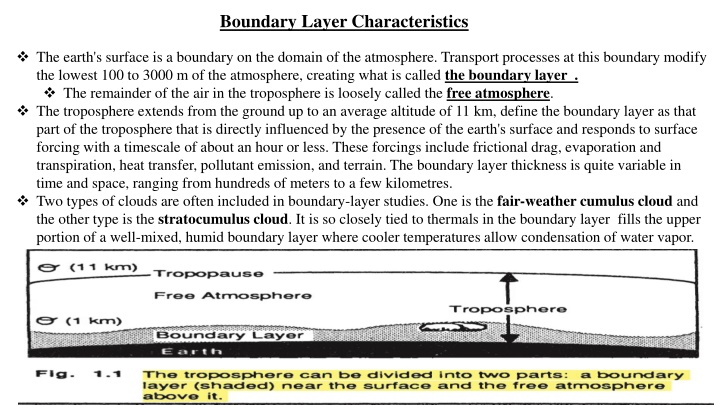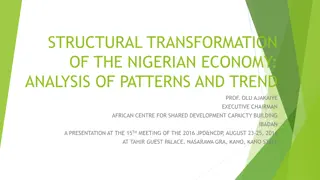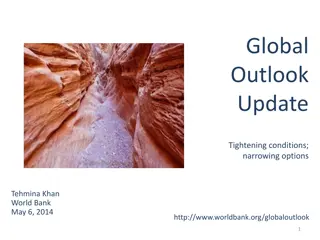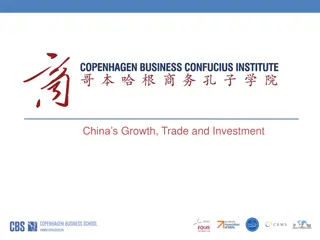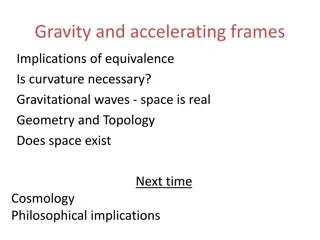Accelerating Economic Transformation: Challenges and Trends
Content discusses South Africa's economic challenges including poverty, unemployment, inequality, and productivity. It also highlights the country's relative GDP per head compared to the G7 nations from 1970 to 2018, showing signs of recovery but with growth trailing global trends.
Download Presentation

Please find below an Image/Link to download the presentation.
The content on the website is provided AS IS for your information and personal use only. It may not be sold, licensed, or shared on other websites without obtaining consent from the author.If you encounter any issues during the download, it is possible that the publisher has removed the file from their server.
You are allowed to download the files provided on this website for personal or commercial use, subject to the condition that they are used lawfully. All files are the property of their respective owners.
The content on the website is provided AS IS for your information and personal use only. It may not be sold, licensed, or shared on other websites without obtaining consent from the author.
E N D
Presentation Transcript
Boundary Layer Characteristics The earth's surface is a boundary on the domain of the atmosphere. Transport processes at this boundary modify the lowest 100 to 3000 m of the atmosphere, creating what is called the boundary layer . The remainder of the air in the troposphere is loosely called the free atmosphere. The troposphere extends from the ground up to an average altitude of 11 km, define the boundary layer as that part of the troposphere that is directly influenced by the presence of the earth's surface and responds to surface forcing with a timescale of about an hour or less. These forcings include frictional drag, evaporation and transpiration, heat transfer, pollutant emission, and terrain. The boundary layer thickness is quite variable in time and space, ranging from hundreds of meters to a few kilometres. Two types of clouds are often included in boundary-layer studies. One is the fair-weather cumulus cloud and the other type is the stratocumulus cloud. It is so closely tied to thermals in the boundary layer fills the upper portion of a well-mixed, humid boundary layer where cooler temperatures allow condensation of water vapor.
For example of temperature variations in the lower troposphere is shown in Fig 1.2. These time-histories were constructed from radiosonde soundings made every several hours near Lawton, Oklahoma. shows a diurnal variation of temperature near the ground that is not evident at greater altitudes. Such diurnal variation is one of the key characteristics of the boundary layer over land. The free atmosphere shows little diurnal variation. This diurnal variation is not caused by direct forcing of solar radiation on the boundary layer. Little solar radiation is absorbed in the boundary layer; most is transmitted to the ground where typical absorptivities on the order of 90% result in absorption of much of the solar energy. It is the ground that warms and cools in response to the radiation, which in turn forces changes in the boundary layer via transport processes. Turbulence is one of the important transport processes, and is sometimes also used to define the boundary layer.
Wind and Flow Air flow, or wind. can be divided into three broad categories: mean wind, turbulence, and waves (Fig 1.3). Each can exist separately, or in the presence of any of the others. Each can exist in the boundary layer, where transport of quantities such as moisture, heat, momentum. and pollutants is dominated in the horizontal by the mean wind, and in the vertical by turbulence. Mean wind is responsible for very rapid horizontal transport, or advection. Horizontal winds on the order of 2 to 10 m/s are common in the boundary layer. Friction causes the mean wind speed to be slowest near the ground. Vertical mean winds are much smaller, usually on the order of millimeters to centimeters per second. Waves, which are frequently observed in the nighttime boundary layer, transport little heat, humidity, and other scalars such as pollutants. They are, however, effective at transporting momentum and energy. These waves can be generated locally by mean-wind shears and by mean flow over obstacles. Waves can also propagate from some distant source, such as a thunderstorm or an explosion. Sometimes atmospheric waves may enhance the wind shears in localized regions, causing turbulence to form. Thus, wave phenomena can be associated with the turbulent transport of heat and pollutants, although waves without turbulence would not be as effective. Turbulence high frequency of occurrence of turbulence near the ground is one of the characteristics that makes the boundary layer different from the rest of the atmosphere. Outside of the boundary layer, turbulence is primarily found in convective clouds, and near the jet stream where strong wind shears can create clear air turbulence (CAT). The frequent lack of turbulence above the boundary layer means that the rest of the free atmosphere cannot respond to surface changes.
